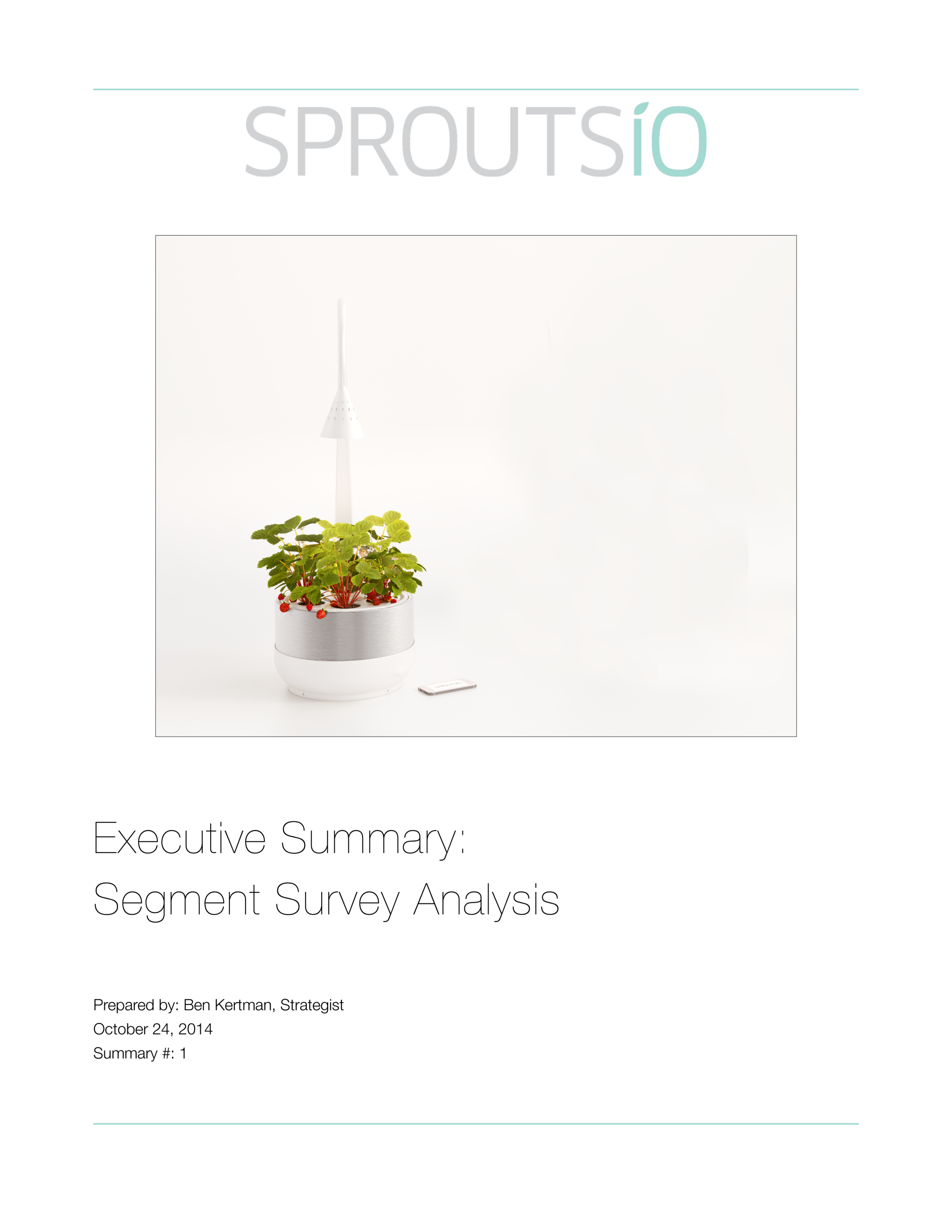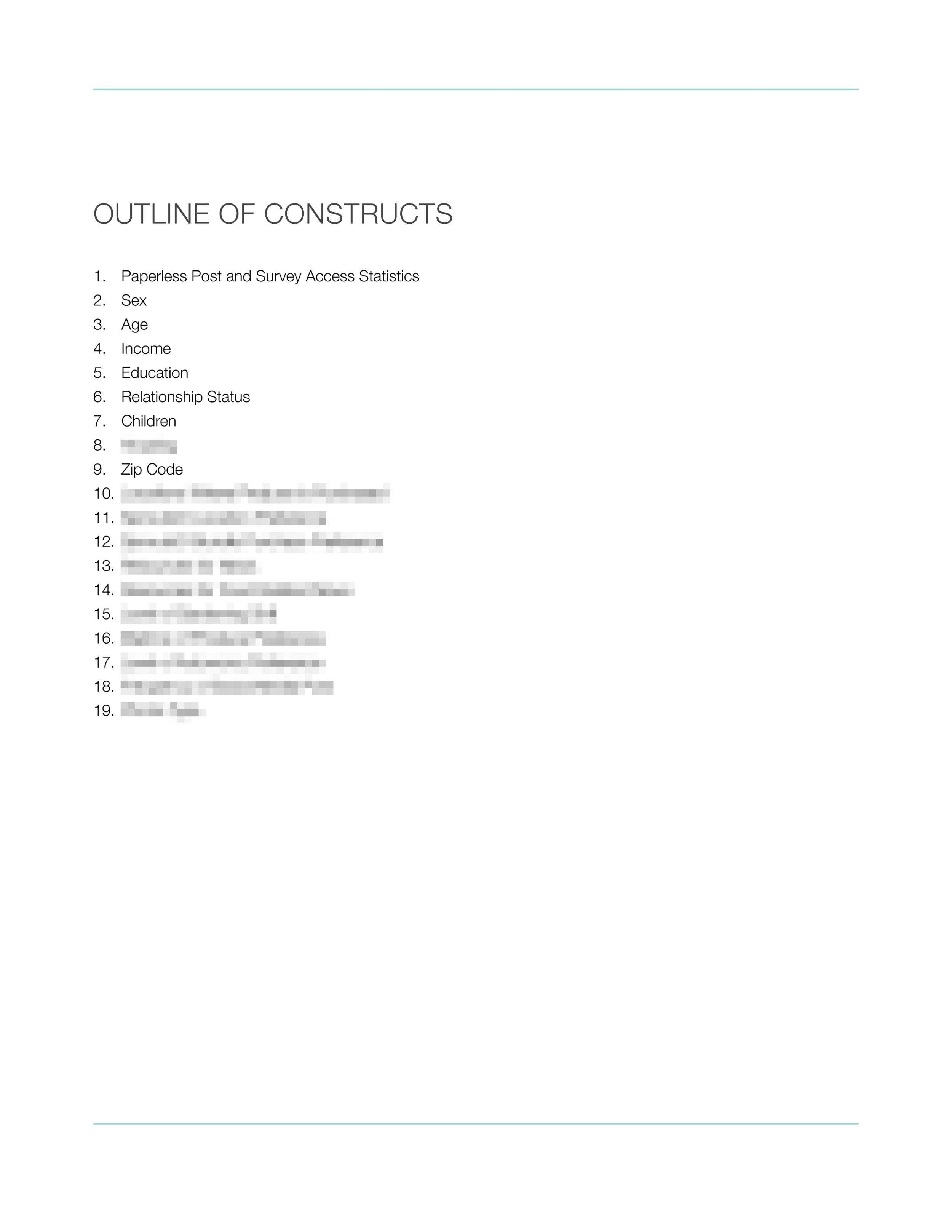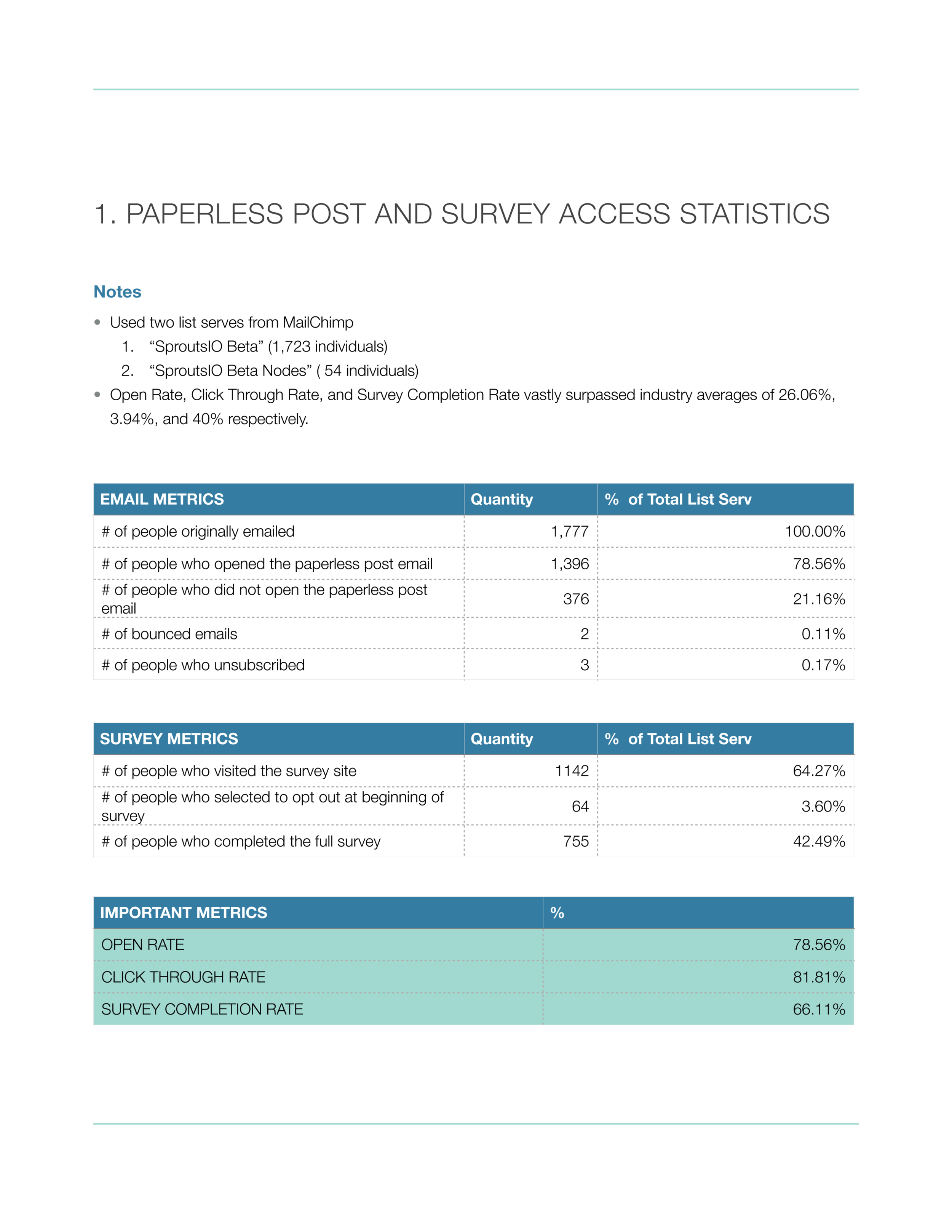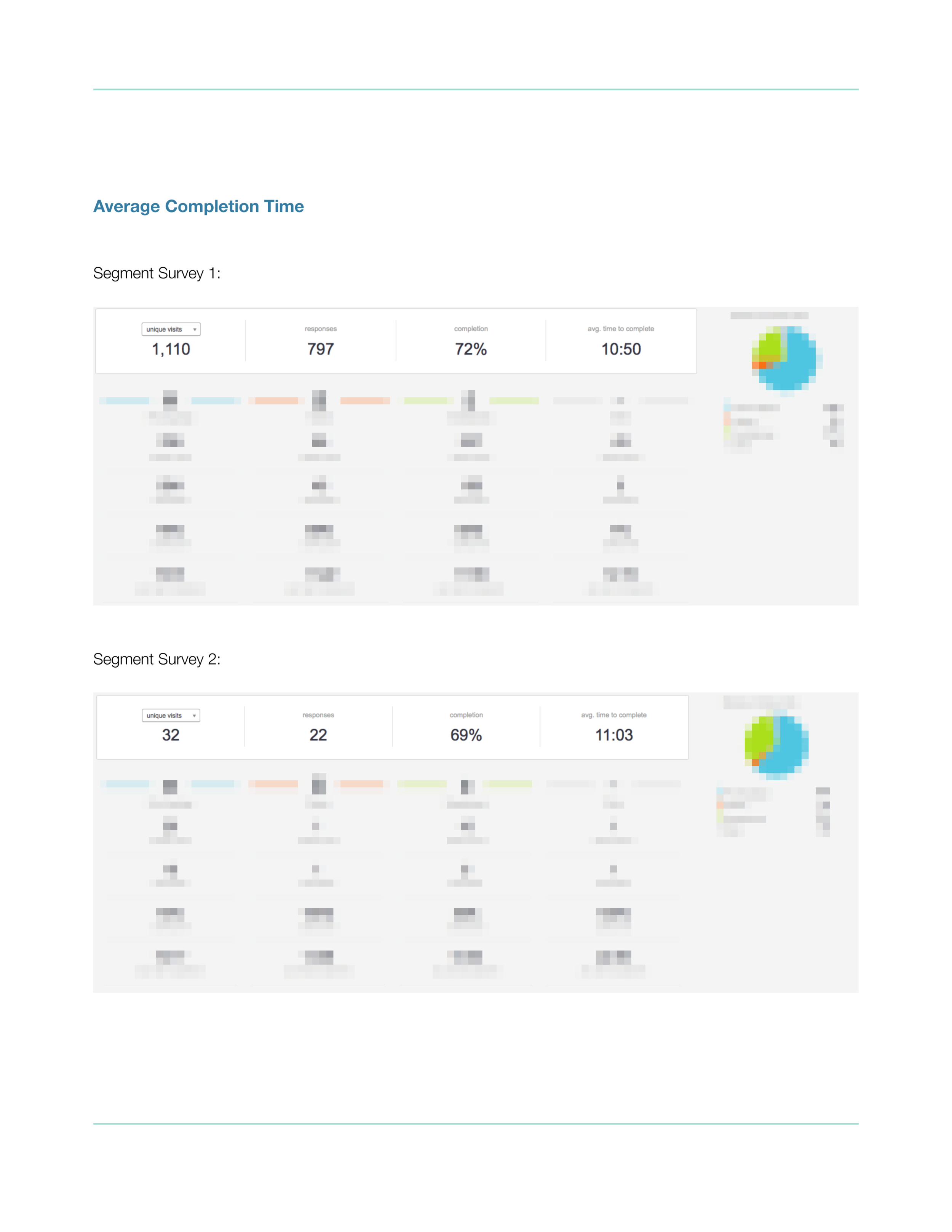
SPROUTSIO
A microfarm designed with hydroculture technology to enable indoor homegrowing direct from your mobile phone.
PT 1: SEGMENT SURVEY
*Please note that due to the sensitivity of the work, most of the images below have been pixelated.
OVERVIEW
ROLE: User Researcher; Data Visualizer; Storyteller
TEAM: Jenny Broutin-Farah; Kamal Farah; Andrea McClave; Sean Olszewski
CHALLENGE: SproutsIO wanted to attract investors; improve the product design to be beta-testing ready; identify best-fit candidates as beta testers; and initiate a positive relationship with all excited potential users. The primary resource available was a listserv that had been growing since the launch of the SproutsIO website.
TIMEFRAME: 8 weeks
SOLUTION: Develop a hybrid qualitative/quantitative survey for the listserv; we called it the Segment Survey.
SKILLS USED: Key Performance Indicators; Value Proposition; User Research; Sketching; Brainstorming; Personas; Competitor Analysis; Demographics; Data Analysis; Logic Flow; Graphic Design
BEHAVIORAL INSIGHTS USED: Reciprocity; Framing; Construct Development; Social Network Theory
TOOLS USED: Illustrator; TypeForm; Excel; STATA; MailChimp
PROCESS
PLANNING & RESEARCH
Key Performance Indicators: The application to become a beta tester on the SproutsIO website garnered a significantly sized listserv of 1,777 interested individuals. During a brainstorming session we developed our primary objectives to support our next steps: attract investors, develop the product to be beta-test ready, identify best-fit candidates for beta testing, and initiate a positive relationship with all excited potential users.
Personas: Besides contact information, the listserv collected answers to the question, "Why are you excited about SproutsIO?". I began by reading through the responses and sketching personas while using tools like Wordle to identify new patterns or validate/invalidate my models. This information guided my design of behavioral constructs to measure in our Segment Survey, as well as, initiate prototyping of the app.
Participant Growth: The more people we had taking the Segment Survey who were intrinsically interested in SproutsIO, the better data we would collect. I therefore used our Personas to curate a list of potentially interested communities that could be reached via a number of online channels and reached out directly to invite them to participate in our Beta Program.
Social Network Theory [Behavioral Insight]: By utilizing social network theories, we developed a MailChimp campaign to attract and identify people who might serve as social nodes - people who influence those in their network. By asking users to invite friends and family, we were able to track who had greater social spread by providing a space in the Segment Survey for individuals to identify by whom they were invited; the more a name was mentioned, the more likely that individual is a social node. These nodes were later used to prioritize which beta testers to select for specific phases of beta testing.
DESIGN
Survey Development (competitive analysis; expert review; graphic design): To circumvent utilizing precious time by re-inventing the wheel, I researched companies with similar attributes (hardware, software and network communications, IoT products, etc.), as well as, behavioral science research to inform the foundations of our question design. Any question-types that could not be obtained through primary research, I developed myself using behavioral construct theory. After developing the questions and logic flow of the survey, I designed it into TypeForm.
TESTING
Pilot: To make sure we were creating a positive first-interaction, I used my contacts at the PEACH Lab to run through the Segment Survey and provide feedback on the experience. The initial reaction was that it was too cold, so I included a conversational tone in the final form. Additionally, I asked the lab to evaluate the quality of the question design, imploring their expertise in construct development. They found that one of the questions I had designed would likely not obtain the relevant information and so they helped me reformulate it to increase our confidence in the data we would receive from the answers.
Segment Survey Release [Behavioral Insight]: I employed behavioral insights in designing the MailChimp campaign in order to craft a message that would increase the likelihood of individuals opening and completing the survey. One behavioral device I used was reciprocity; framing the message as an acceptance letter; by providing a favor (acceptance into the program), individuals may be more likely to reciprocate by completing the survey.
SOLUTION
Issues: We ran into a few problems along the way. Our survey was posted on twitter, bypassing and extending beyond our listserv. This was an issue because our campaign contained information about our schedule, something that we did not want public at that time. Fortunately, this occurred after the bell curve of the majority of the people who would complete the survey, so we closed the original Segment Survey and reissued another one to the few remaining individuals who had not yet had the chance. Ultimately, we considered this good news that the excitement regarding our product and experience ascended to virality.
Results: Between the intrinsic excitement to become a beta tester and our application of behavioral insights to boost participation, we yielded an exceptionally high clickthrough rate of our MailChimp campaign and completion rate of the Segment Survey (81.81% and 66.11%, respectively). The sample size was large enough for me to apply cross-sectional data analytics to explore the results of our quantitative questions. Ultimately, I designed the results into a graphics-based Executive Summary for our CEO to present to key investors.













